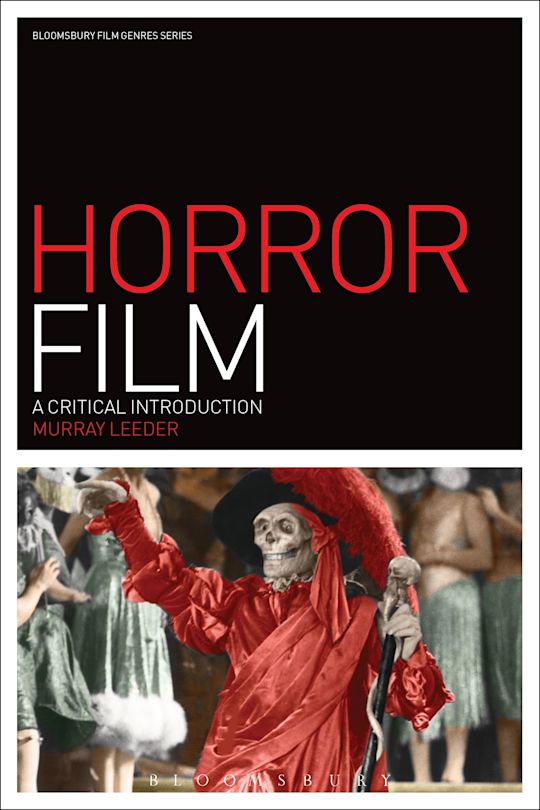- Home
- ACADEMIC
- Film & Media
- Film Genre
- Horror Film
Inspection copy added to basket
Choose your preferred format. If you would prefer an ebook and it is not displayed below, please visit our inspection copies page.
Please note ebook inspection copies are fulfilled by VitalSource™.
Buy from Bloomsbury eTextBooks
You are now leaving the Bloomsbury Publishing website. Your eBook purchase will be with our partner https://www.vitalsource.com.
Your credit card statement will show this purchase originating from VitalSource Technologies. They will also provide any technical assistance you might require.
You must sign in to add this item to your wishlist. Please sign in or create an account
Description
Throughout the history of cinema, horror has proven to be a genre of consistent popularity, which adapts to different cultural contexts while retaining a recognizable core. Horror Film: A Critical Introduction, the newest in Bloomsbury's Film Genre series, balances the discussions of horror's history, theory, and aesthetics as no introductory book ever has. Featuring studies of films both obscure and famous, Horror Film is international in its scope and chronicles horror from its silent roots until today. As a straightforward and convenient critical introduction to the history and key academic approaches, this book is accessible to the beginner but still of interest to the expert.
Table of Contents
List of Images
Introduction
1: Horror's Process of Genrification, 1895-1938
2: 1939-1973: Horror and the Crisis of Rationality
3: 1974-Present: High and Low
4: What Is Horror?
5: Mind and Body: The 'Why?' of Horror
6: Horror's Audiences, Critics and Censors
7: Shocking and Spooky Sounds
8: Colours of Fear
9: Digital Horrors
Works Cited
Index
Product details

| Published | 25 Jan 2018 |
|---|---|
| Format | Ebook (PDF) |
| Edition | 1st |
| Extent | 288 |
| ISBN | 9781501314469 |
| Imprint | Bloomsbury Academic |
| Illustrations | 37 bw illus |
| Series | Film Genres |
| Publisher | Bloomsbury Publishing |
About the contributors
Reviews
-
Concise yet also comprehensive, Leeder's study examines the horror film from its prehistory to its digital future(s), tackling its history, reception contexts, and shifting forms. A delight to read, the book will satisfy newcomers to the horror genre as well as advanced scholars and die-hard fans.
Harry M. Benshoff, Professor of Media Arts, University of North Texas, USA and editor of A Companion to the Horror Film (2014).
-
Leeder maps the glorious dark continent of Horror, guiding us through its high metaphic mounatins and low slasher riverbeds, along the way uncovering the hidden treasures of a true art form that, at its most potent, is poetic, emotionally resonant, and quintessentially cinematic.
Stephen Volk, screenwriter of Gothic, Ghostwatch, The Awakening
-
Horror Film: A Critical Introduction is an excellent, engagingly written book. It is both an indispensable introduction to one of the most consistently popular and culturally resonant film genres, and a work that brings new and imaginative perspectives, and previously neglected films and case studies, to the centre of debate and discussion within the field of horror film studies. Highly recommended for students, teachers, scholars and fans alike.
Kate Egan, Senior Lecturer in Film Studies, Aberystwyth University, UK
-
Ambitious and wide-ranging, Horror Film is a welcome, accessible overview of this most disreputable and delightful of genres. Leeder's focus is the reader new to studying horror: the fan, the student, the film practitioner looking to 'gen up' on genre. With clear, jargon free language, Leeder expertly guides the reader through horror standards including Dracula and Night of the Living Dead, while also making space to explore lesser known gems such as Eyes Without a Face and Ginger Snaps, smart indie films designed to provoke shock, disgust and dark pleasures.
Alison Peirse, Lecturer in Writing for Screen and Stage, University of York, UK

ONLINE RESOURCES
Bloomsbury Collections
This book is available on Bloomsbury Collections where your library has access.



































